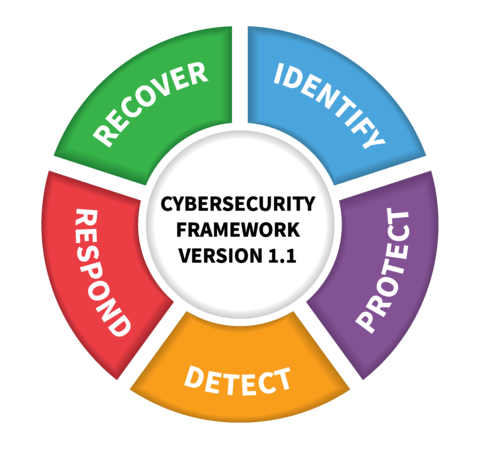
GAITHERSBURG, Md.—The U.S. Commerce Department’s National Institute of Standards and Technology (NIST) has released version 1.1 of its popular Framework for Improving Critical Infrastructure Cybersecurity, more widely known as the Cybersecurity Framework.
“Cybersecurity is critical for national and economic security,” said Secretary of Commerce Wilbur Ross. “The voluntary NIST Cybersecurity Framework should be every company’s first line of defense. Adopting version 1.1 is a must do for all CEO's.”
The framework was developed with a focus on industries vital to national and economic security, including energy, banking, communications and the defense industrial base. It has since proven flexible enough to be adopted voluntarily by large and small companies and organizations across all industry sectors, as well as by federal, state and local governments.
“The release of the Cybersecurity Framework Version 1.1 is a significant advance that truly reflects the success of the public-private model for addressing cybersecurity challenges,” said Under Secretary of Commerce for Standards and Technology and NIST Director Walter G. Copan. “From the very beginning, the Cybersecurity Framework has been a collaborative effort involving stakeholders from government, industry and academia. The impact of their work is evident in the widespread adoption of the framework by organizations across the United States, as well as internationally.”
Version 1.1 includes updates on:
- authentication and identity,
- self-assessing cybersecurity risk,
- managing cybersecurity within the supply chain and
- vulnerability disclosure.
The changes to the framework are based on feedback collected through public calls for comments, questions received by team members, and workshops held in 2016 and 2017. Two drafts of Version 1.1 were circulated for public comment to assist NIST in comprehensively addressing stakeholder inputs.
“This update refines, clarifies and enhances Version 1.0,” said Matt Barrett, program manager for the Cybersecurity Framework. “It is still flexible to meet an individual organization’s business or mission needs, and applies to a wide range of technology environments such as information technology, industrial control systems and the Internet of Things.”
Later this year, NIST plans to release an updated companion document, the Roadmap for Improving Critical Infrastructure Cybersecurity, which describes key areas of development, alignment and collaboration.
“Engagement and collaboration will continue to be essential to the framework’s success,” said Barrett. “The Cybersecurity Framework will need to evolve as threats, technologies and industries evolve. With this update, we’ve demonstrated that we have a good process in place for bringing stakeholders together to ensure the framework remains a great tool for managing cybersecurity risk.”
The process used to update the framework is now published on the Cybersecurity Framework website to ensure all parties understand how future updates will be made.
Numerous industry surveys from organizations such as Gartner, Tenable and Cisco indicate sustained and increasing use of the framework over time. In May 2017, President Trump issued the Executive Order on Strengthening the Cybersecurity of Federal Networks and Critical Infrastructure, which directs all federal agencies to use the Cybersecurity Framework. Corporations, organizations and countries around the world, including Italy, Israel and Uruguay, have adopted the framework, or their own adaptation of it.
“We’re looking forward to reaching more industries, supporting federal agencies, and especially helping more small businesses across the U.S. benefit from the framework,” said Barrett.
NIST will host a free public Webcast explaining Version 1.1 in detail on April 27, 2018, at 1 p.m. Eastern time.
NIST is also planning a Cybersecurity Risk Management Conference—which will include a major focus on the framework—for November 6 through 8, 2018, in Baltimore, Maryland. Detailed information on the conference will soon be available on the Cybersecurity Framework website. The website also includes guidance for those new to the framework, links to framework-related tools and methodologies, and perspectives on the framework from those who use it.
NIST promotes U.S. innovation and industrial competitiveness by advancing measurement science, standards and technology in ways that enhance economic security and improve our quality of life. NIST is a non-regulatory agency of the U.S. Department of Commerce. To learn more about NIST, visit www.nist.gov.

